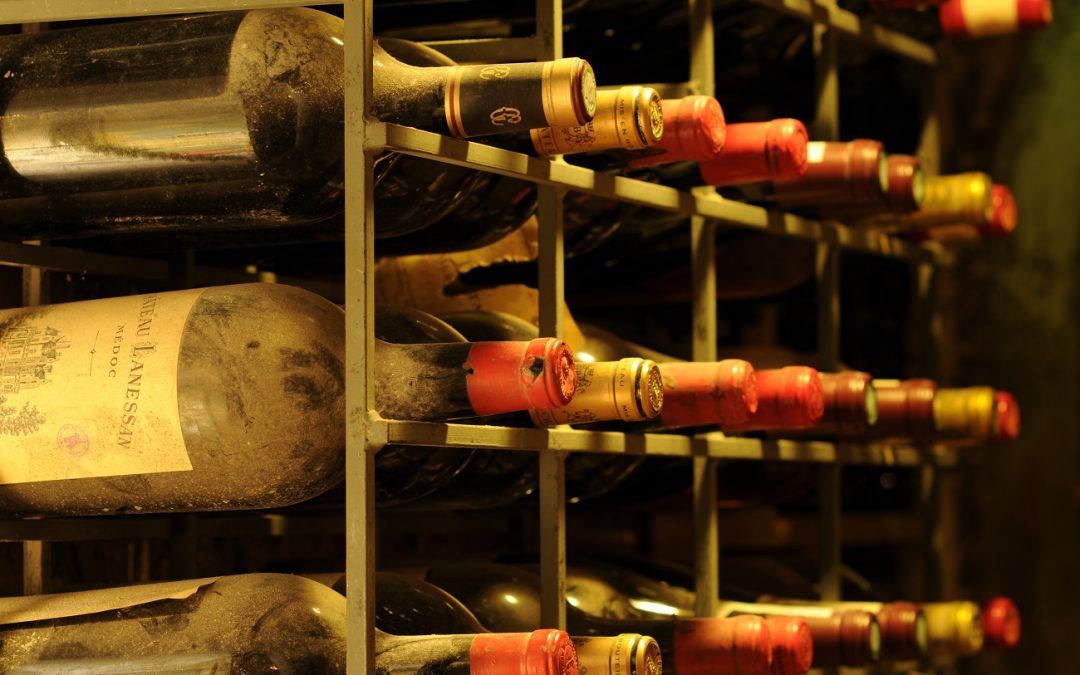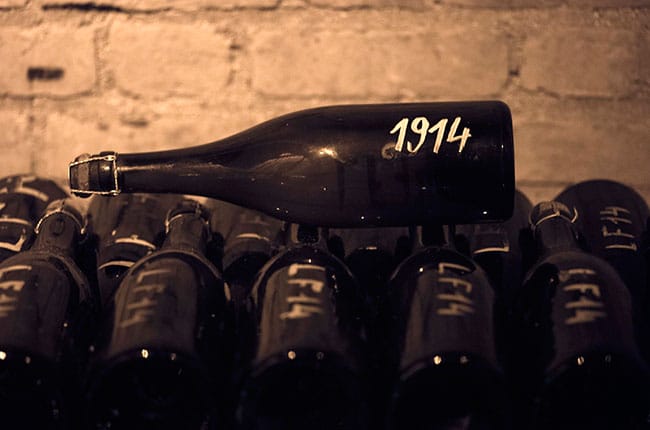The role that good marketing and sales strategies play in the success of any consumer-driven business can’t be overstated.
But over the past decade, good sales and marketing strategy has become unavoidably linked with good digital practices and the need to keep up with changing technology and consumer preferences. From choosing the right programs, platforms and tools to using these tools and platforms correctly and hiring the right people to manage, analyse, and implement best practices, businesses in the wine industry face many challenges when it comes to digitising their business.
One of the biggest barriers has been wineries’ tendency to be resistant to change and to rely on practices that have been successful in the past – even as it becomes clear that these are no longer sufficient.
1. Slow to change
While small and midsize businesses face the greatest gap when it comes to keeping up with or implementing new technology or digital practices, the wine industry as a whole is often slow to adapt to changing technological requirements and consumer buying preferences.
Over the past 10 to 15 years the US wine industry has seen huge shifts. From the rapid escalation of US consumer wine consumption followed by the dramatic increase in the number of wineries and therefore competition (both for on-site sales as well as for distributor representation and wholesale placements) to the 2008 recession and ensuing global wine glut, the shift from analogue to digital, and the current ongoing global pandemic.
And, while Covid-19 may have presented the strongest impetus for the industry to make real change, in over a decade, it also highlighted existing weaknesses in the industry.
The unfortunate reality is, that many businesses in this industry wait until the world is on fire (or until they are faced with a global pandemic) to start considering making the changes they should have started implementing years before. And, while since mid-March and the start of SIP, many businesses did quickly snap into action or pivot to adapt and recover lost tasting room, and DTC sales, there are still many (particularly within the small to midsize winery category) who lag.
Missed opportunities
The following list is a list of the most commonly missed opportunities that marketing and digital strategy professionals see in the wine industry when it comes to digital strategy, online marketing and sales.
From realising that they need to have a presence on social media to taking the time to update their website to offer a cleaner and more user-friendly design and layout or setting up their ecommerce store, wineries have always tended to wait until other retail industries have used technology for many years (often as long as a decade or more) before seeing the need to implement these technologies themselves.
This is a problem for a variety of reasons, but chief among them is the fact that often, showing up so late to the party that it’s almost over, means that a business is most likely going to have to work longer and harder to get the same or lesser results as they would have achieved had they made these changes much earlier.
Rob McMillan, author of the immensely valuable Silicon Valley Bank ‘State of the Wine Industry’ Report states, “Whether it was the development of websites, the inclusion of shopping carts, the effective use of social media, the most basic use of ecommerce SEO and GoogleAnalytics, or the collection and maintenance of customer names, the wine business has lagged behind the retail world consistently by five to 10 years.”
Cornelius Geary a long-time social networking innovator and startup founder in the industry, adds: “A lot of the problems for wine industry tech and social adoption has been based on the industry mostly focused on the agrarian side of things. Tech is hard and requires a lot of work to implement and the industry has been far more heavily focused on face-to-face sales at a winery or at the distributor level where the end user is mostly unknown.”
Jennifer Prevost, marketing director at Craftwine.org, says she finds small to mid-sized wineries are often “very slow adopters of digital marketing and social media”. A poll of members of Craftwine.org, which includes a national membership programme for wineries producing under 5,000 cases a year, found that only about 10% are using social media effectively to sell wine.
“There are a few reasons for this,” says Prevost, “including a lack of time and technical understanding, a desire to rely on the social, in-person aspects of wine tasting and an artisan mentality that makes these business owners less sales savvy than those in some other industries.”
2. Not Fully Utilising the Tools and Data They Have
The common consensus among the marketing professionals who were interviewed for this article is that all too often, wineries aren’t personalising their digital marketing efforts.
What does ‘personalising’ a business’s marketing entail? Personalising the message or content that a business sends, or that is automatically displayed to their customers or potential customers based on those customers’ preferences and past behaviour, or where that customer is in the buyer journey.
Examples of personalisation opportunities that are often under-utilised by wineries:
A. Segmentation of email lists and personalisation of emails – sending different kinds of emails and campaigns to different groups (or segments) of people. For example: creating different emails for wine club and non-wine club subscribers, creating a special campaign to send to high-end buyers [insert any group here], etc;
B. Automated email sequences: emails that are sent automatically to subscribers based on certain actions (the sequences are triggered by these actions) such as the Welcome Email series (sent to subscribers immediately after they subscribe to the business’s email list), Abandoned Cart emails (sent to customers who’ve left items in a shopping cart without purchasing), First Purchase emails (sent to customers after their first purchase to confirm they are happy), etc.
C. Personalised automated content on websites: popups that are triggered based on what page a person visits or is on (email signup popups automatically shown to those who spend longer than x seconds on a business’s site, pop-ups that appear while a customer is on the shopping cart page to remind them that if they spend x$ more they’ll receive free shipping); differently organised products (featuring the products a customer is most likely to buy) based on a customer’s buying and browsing history.
Wine industry email marketing platforms such as Premier Cellar confirm that personalised and relevant emails drive 18 times more revenue than non-personalised campaigns (campaigns sent to entire databases of subscribers without segmentation or strategy).
Commerce7’s Andrew Kamphuis confirmed that 46% of all of the ‘add to cart’ clicks that their clients had (in 2019) were in response to displaying personalised content ‘blocks’ (i.e. content displaying only specific products these customers are most likely to purchase based on past behaviour as well as personalised messaging) to those users, even though this personalised content only appeared on less than 10% of clients’ sites.
They have also seen their personalised content (see example below) convert 16 times more often than typical product list pages, and 4.4 times more often than standard product description pages.
There are endless studies and countless data that prove how valuable personalising a business’s marketing efforts is. Why is it then, that so many wineries only take advantage of such a small % of the personalisation and customisation opportunities that are available to them?
3. Not Hiring the Right Talent or Outsourcing as Needed
It is difficult if not impossible to employ advanced digital strategies and marketing tactics if a business doesn’t hire or outsource to people with the right experience and/or skill-set.
In the most recent State of the US Wine Industry 2020 Silicon Valley Bank annual report, Rob McMillan presented his findings after having surveyed 800+ wineries. The results showed that only 18% of the surveyed wineries currently employ someone who is in charge of managing their customer database and analysing consumer data, full-time.
“One issue holding many wineries up is the lack of focus and specialisation. The job of pushing ecommerce is often given to someone working in the tasting room, without the relevant skills, as an extra project,” says McMillan, “While most small wineries can’t hire a full-time person with the necessary experience, they could employ consulting help to build out essential ecommerce tools that will more than pay for itself.”
Paul Mabray, chief executive of Emetry.io, a long-time advocate of digital transformation in the industry as well as a leader in data analytics technology, makes the realistic observation that: “We pay far less than comparable industries, and despite having so many people interested in working in wine, the lower pay repels so many different people who could have been transformative to our industry.”
He adds: “Often, we hire the B, C, or even D-level talent because they are willing to take less money for the opportunity to work in wine. Further, the most talented people who do join our industry after 18 months when they realise they can’t affect change – or that free wine (a perk of the job) won’t fill the gas tank.”
Taylor Eason, of Cork and Fork Digital Media, agrees: “In [wine industry] marketing, there are so many different specialities, it’s difficult to hire one one-size-fits-all person. Good digital marketers are expensive. Outsourcing digital is easier and cheaper than hiring a full-time in-house person. My advice to any winery is to hire a mid-level manager in-house who has an understanding of digital marketing, and then outsource the bulk of the digital work to an outside agency or consultant who knows the wine business.”
4. Not Communicating with or Leveraging Current Customers and Contacts in the Right Ways
Again and again, this comes up when speaking to marketing and digital strategy experts in the industry. Wineries communicate what they wish people were most interested in versus the information that people are most likely searching for.
In too many cases, when a customer visits a winery’s website, what they can find most easily (and without effort) is the wineries’ ‘brand story’ or details on how to join their wine club. But the reasons that most consumers visit a winery’s website are a) for contact information, hours of operation or tour/tasting options or b) to shop for wines.
Despite this, many wineries persist in focusing their time and attention on what they see to be the most important or potentially profitable priorities, instead of focusing on how to give the largest number of potential customers what they want, and how they want it.
The aggressive push to sell more and more to wine club members or to customers who had purchased the most in the past bled over into early marketing efforts just after SIP, where consumers saw their inboxes quickly fill with overly promotional and/or desperate sales messages.
Yet, the reality is, that most winerys’ are only reaching 25% ( fewer in some cases, and slightly more in some cases ) of their email subscribers with their email marketing campaigns. And, not only do aggressive sales tactics and repetitively similar messaging not have the desired effect (higher sales to a higher number of people a higher number of times per year), but they can damage a business’s long-term sales, subscriber retention, and customer relationships.
Lack of the right talent
So why have so many wineries placed so little focus on communicating with more of their fans and customers in more effective ways? It seems to come back, again, to a lack of qualified marketing personnel, and therefore the absence of any one person responsible for focusing on and implementing strategies that will not only profit a business in the short term (immediate gratification) but will also facilitate continued, consistent results and growth.
When businesses communicate with their customers and contacts in the way they want to be communicated with, and market to them in a variety of different ways to ensure that they are reaching as many as possible, the results are dramatic.
Take remarketing (marketing to a business’s current customers and contacts) as an example, says Eason at Cork and Fork Digital Media. “Remarketing or retargeting is definitely one of the most missed opportunities for wineries emphasising DTC. The effort always pays off. Before the pandemic, we saw a $20 ROI per $1 spent but during, it’s been closer to three to four times that,” he says.
“Many wineries focus their efforts on new customer acquisition (specifically new club member acquisition), or are hyper-focus on their current club memberships. This often leaves a large portion of their database untouched, or only touched by mass ‘blob’ marketing efforts.”
Sara Redahan, director of winery product and client services, at Emetry, adds: “Smart segmentation efforts, in combination with data-driven automation, allows wineries to communicate with their customer base beyond the traditional club vs. non-club divide, and tap into the potential of the customers already in their list. We’ve seen this type of engagement more than double the activity of return purchasing behaviour.”
Wine clubs sign up
Since the advent of wine clubs, wineries have always placed an incredible amount of focus on getting people to sign up for their clubs. And this made sense, especially during the glory days when consumers only encountered wine clubs at wineries and they were something special and unique.
Wineries’ quarterly or bi-annual shipments guaranteed regular and consistent injections of capital, which they soon began to rely on. But like anything, if a business places too much focus on one sales method or channel at the cost of others, it can have an increasingly negative impact over time.
Not only because a single-minded focus on signing up as many people as possible to a business’s club (which most winery staff are incentivised to do) leads to a decreased focus on the rest of a winery’s customer base, but also because the seeming success of these tactics makes it easier to ignore the ever-growing need to evolve technologically, and digitally and to strategise on how to build strong sales outside of the tasting room.
Wineries can see this now, in a post-covid world, but marketers have been saying this for a decade.
5. Not Thinking Long Term When it Comes to Digital and Marketing Strategy
From not investing in the right people to not adapting or embracing real change until forced to do so, it’s been abundantly clear to those on the marketing and digital side of the industry over the past decade, that too many wine industry businesses treat digital and marketing strategy as an afterthought. Something that they only need to focus on when times get tough.
In other industries, marketing and digital strategy is seen as integral and budgets are allocated accordingly. Often, in the wine industry, not only are appropriate budgets not allocated, but it’s common to find small wineries that don’t even have an existing marketing plan or budget.
“Too often, [wine industry] business look at digital as a ‘project’ instead of a perpetual and integral part of their business,” says Mabray. “It’s critical that wineries start thinking about the tasting room as a place to generate new online customers, in addition to generating on-site sales and club signups. Over the past few months, consumers have made a giant shift to online retail and that trend is only going to continue in the long term. Regardless of what happens with visitation, direct-to-consumer sales success going forward will be greatly impacted by a winery’s ability to grow ecommerce sales.”
Adrienne Stillman, marketing director, at WineDirect, agrees the time has come for action. She explains: “The case for adopting current technology and implementing the appropriate tools to improve wineries’ online marketing and sales before businesses are facing a disaster or economic crisis, is easily made. The evidence is and has been, clear. Improve and adapt and businesses will not only thrive (at higher than previous levels) during good years but will weather storms far more successfully during challenging times.”
Eight months into the current global pandemic, the good news is that the wine industry has accomplished more within a short period to adapt and adopt new and necessary technology and digital strategies than in the previous decade. But it should be noted that these initial successes (enjoyed at the highest levels by those who leapt into action first and already had effective ecommerce platforms in place) don’t guarantee continued effortless success. Maintaining sales and ensuring continued growth will take continued and consistent effort as well as more…change.





